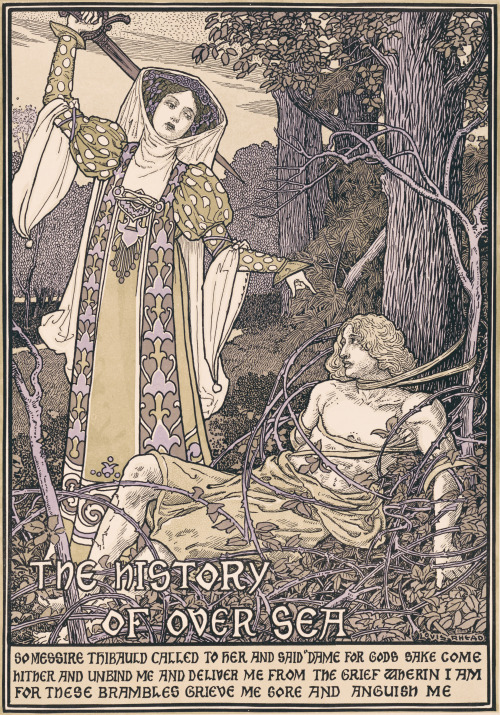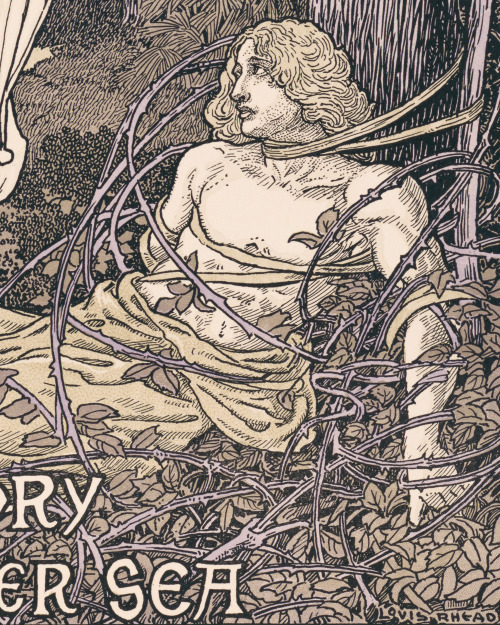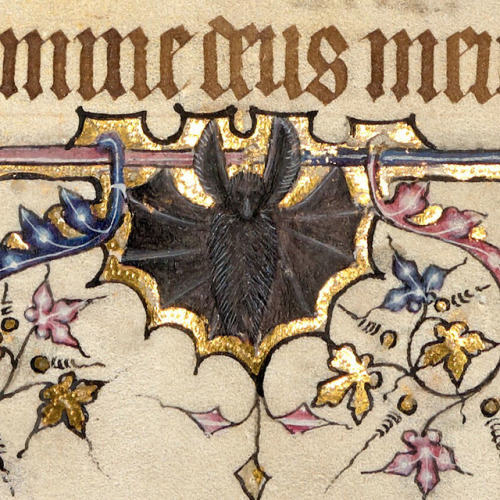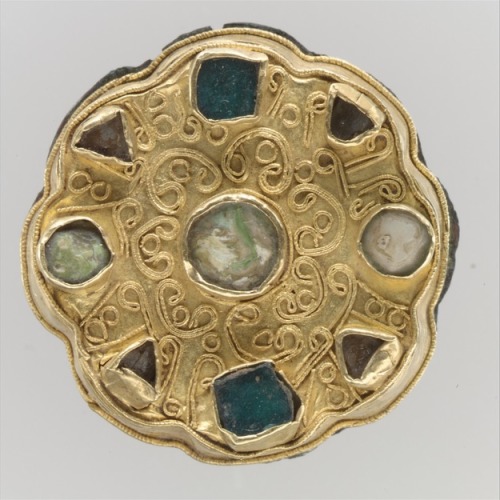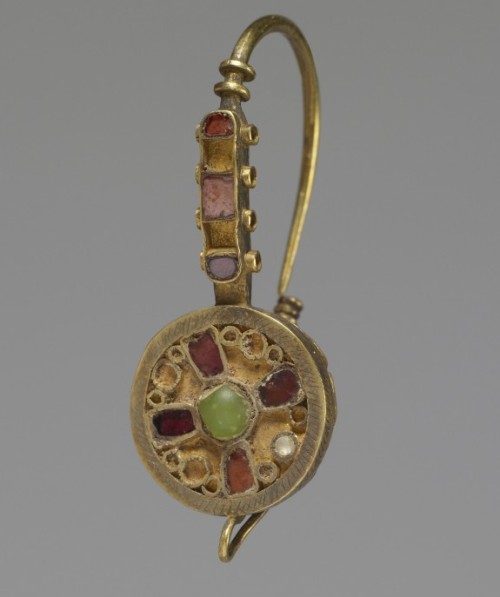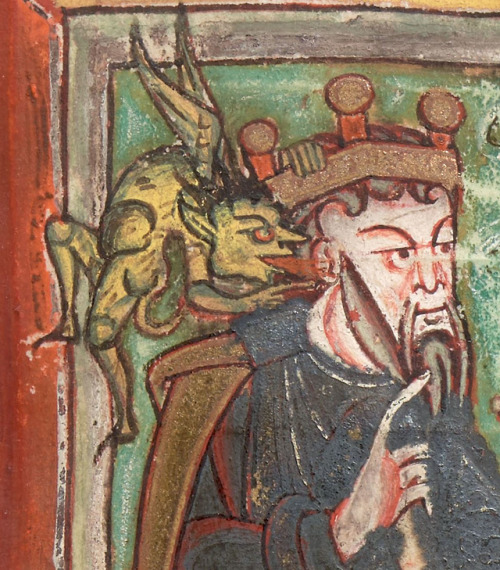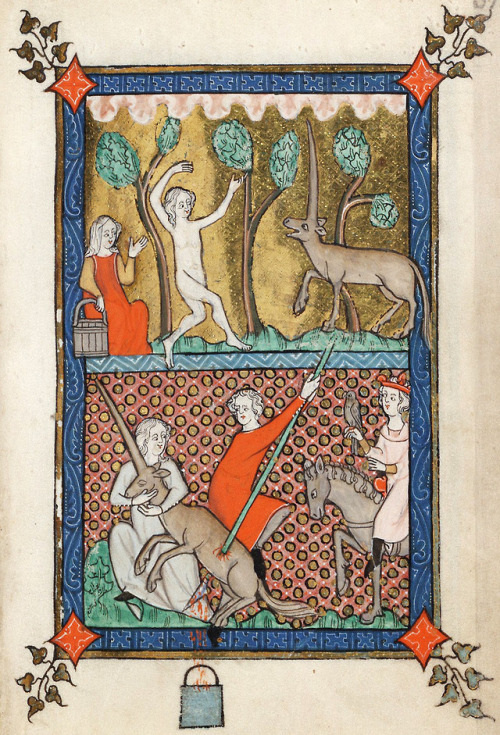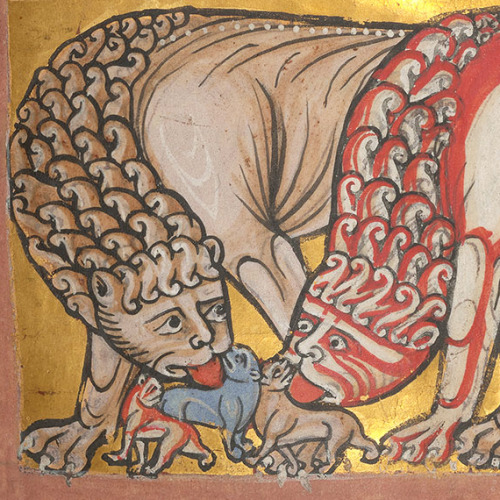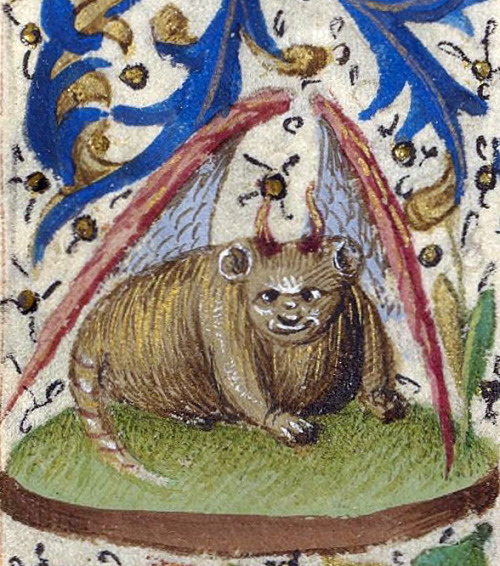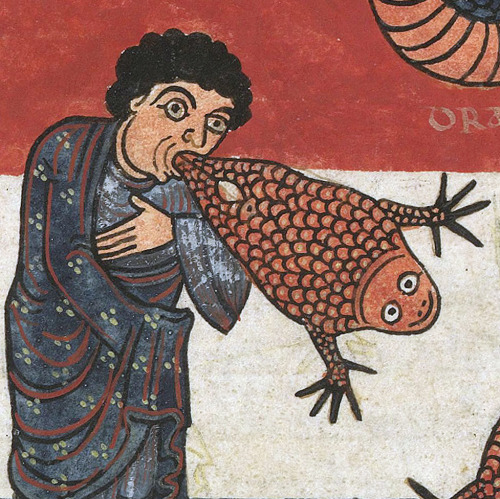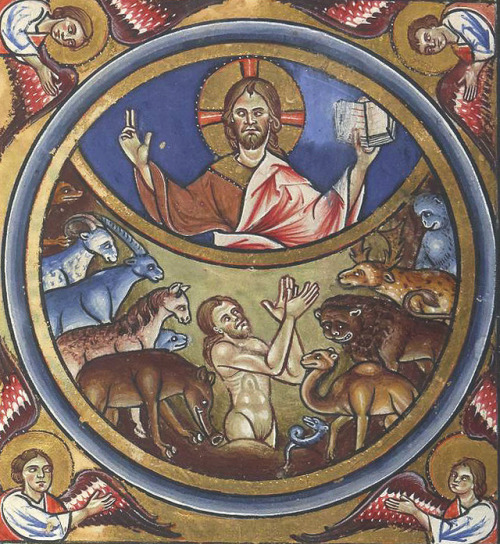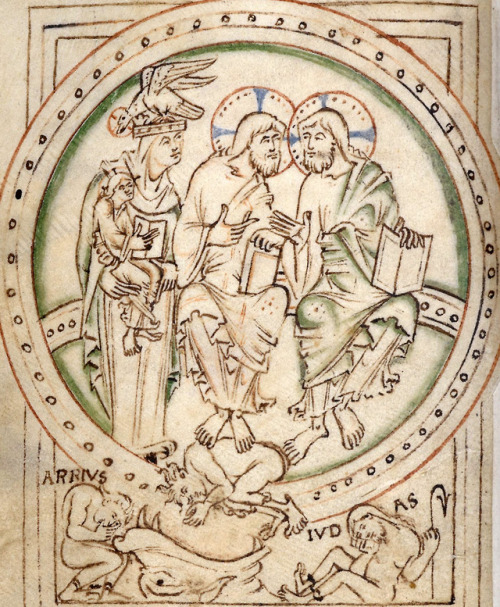#medieval art
Illustration by Louis Rhead (1857-1926) for The History of Over Sea by William Morris, 1894.
Post link
long-eared bat
Psalter, England c. 1360-1400
Bodleian Library, Exeter College MS 47, fol. 21v
Post link
Disk Brooch
Frankish
650- 700
Gold with green and clear glass, mother-of-pearl, and copper
“The dress of Frankish women generally consisted of a tunic, cinched by a belt from which hung an array of pendants. A wrap or cloak went over the tunic. Shoes and hosiery, fastened with buckles, covered the legs. Earrings, necklaces, and hairpins completed the ensemble.
Aspects of this dress changed from the 300s to the 600s, and brooches in particular convey changes in taste. From the 300s to the 500s, pairs of small brooches, in an array of inventive shapes, held the wrap in place. By the 600s, a single large disc brooch, usually elaborately decorated, served the same function. No other piece of jewelry is more characteristic of Frankish dress than the brooch, and no other better demonstrates the virtuosity of Frankish metalworkers.”
In the collection of The Metropolitan Museum of Art. Image and description taken from the object’s page on The Met’s website. Visit the object’s page for zoom capability, related objects in the collection, and online resources.
Post link
Basket Earring
Lombardic / Langobardic
Late sixth- seventh century CE
Gold with garnets and glass paste
“One of the most common types of Langobardic jewelry, the basket earring derives its name from the hemispherical "basket” of gold wire as in this example. The front disk of gold is inlaid with gold wire cells for four red glass or garnet inserts arranged like the arms of a cross around a central, circular cell filled with a rounded green stone or glass. A triad arrangement of one large and two small circular gold wire circlets fills the space between the garnet inlays and creates a ring around the cross. A thick, flattened lip of gold decorated with hatching and cross-hatching overlays the outer edge of the disk where it joins the basket. On the front of the hoop are a row of five cells for red glass or garnet inlays, of which three are still filled. The sides of the hoops are decorated with a row of four wire circlets. A loop attached to the base of the earring once suspended an additional pendant.“
In the collection of the Walters Art Museum. Image and description taken from the object’s page on the Walters Art Museum website. Visit the objects’ page for additional images (in which you can see the "basket” described above) and zoom capability.
Post link
The Franks Casket (detail from the front), Anglo-Saxon carved bone casket, ca. 8th century AD, Northumbria, England.
The box is made of whale’s bone, richly carved on the sides and lid in high relief with a range of scenes with accompanying text in both the runic and Roman alphabets and in both Old English and Latin. The front is divided into two scenes: the left is derived from the Germanic legend of Weland the Smith, while the right depicts the Adoration of the Magi, when the three wise men visited the newborn Christ, labelled ‘mægi’ in runes. Surprisingly, the main runic inscription on the front does not refer to the scene it surrounds. It is a riddle in Old English relating to the origin of the casket. It can be translated as 'The fish beat up the seas on to the mountainous cliff; the King of terror became sad when he swam onto the shingle.’ This is then answered with the solution 'Whale’s bone.’ It tells us that the casket was made from the bone of a beached whale. - britishmuseum.org
Post link
Medieval linen bra, ca. 15th century, Lengberg Castle, East Tyrol, Austria.
Up until now there was nothing to indicate the existence of bras with clearly visible cups before the 19th century. Textiles found in a castle in Eastern Tyrol now prove that there already was clothing similar to modern bras in the 15th century – a discovery made by Beatrix Nutz, an archaeologist from the University of Innsbruck.
This “bra” is the one that resembles a modern bra the most. At the first assessment this garment was referred to in German as “Mieder” (= corselette in English) by the excavating archaeologists. It can also be described with the term “longline bra”. The cups are each made from two pieces of linen sewn together vertically. The surrounding fabric of somewhat coarser linen extends down to the bottom of the ribcage with a row of six eyelets on the left side of the body for fastening with a lace. The corresponding row of eyelets is missing. Needle-lace is sewn onto the cups and the fabric above thus decorating the cleavage. In the triangular area between the two cups there might have been additional decoration, maybe another sprang-work. - pasthorizonspr.com
full article : http://www.pasthorizonspr.com/index.php/archives/07/2012/medieval-lingerie-discovered
Post link
unicorn hunt
Rothschild Canticles, Flanders c. 1300
Beinecke Rare Book and Manuscript Library, MS 404, fol. 51r
Post link
exorcism
Vincent of Beauvais, Miroir Histoire (Speculum Historiale), Paris c. 1332-1335
BnF, Arsenal Ms-5080, fol. 176r
Post link
lions licking their cubs
Worksop Bestiary, England c. 1185
NY, The Morgan Library & Museum, MS M.81, fol. 8r
Post link
unicorn devil
Livre de la Vigne nostre Seigneur, France c. 1450-1470
Bodleian Library, MS. Douce 134, fol. 87r
Post link
open-minded martyrs
(Saint Denis and Saint Piatus)
‘Livre d'images de madame Marie’, Hainaut or Brabant c. 1280-1290
BnF, Nouvelle acquisition française 16251, fol. 84v
Post link
False Prophet
(Revelation 16:13)
Beatus of Liébana, Commentaria in Apocalypsin (the ‘Beatus of Saint-Sever’), Saint-Sever before 1072
BnF, Latin 8878, fol. 184v
Post link
creation of the mammals
Great Canterbury Psalter, Canterbury c. 1176-1200
BnF, lat. 8846, fol. 1r
Post link
Adam, Eve and the Serpent
Beatus of Liébana, Commentaria in Apocalypsin (the ‘Silos Apocalypse’), Santo Domingo de Silos 1091-1109
BL, Add. 11695, fol. 40r
Post link
family portrait
‘Ælfwine’s Prayerbook’, Winchester c. 1030
BL, Cotton Titus D XXVII, fol. 75v
Post link

